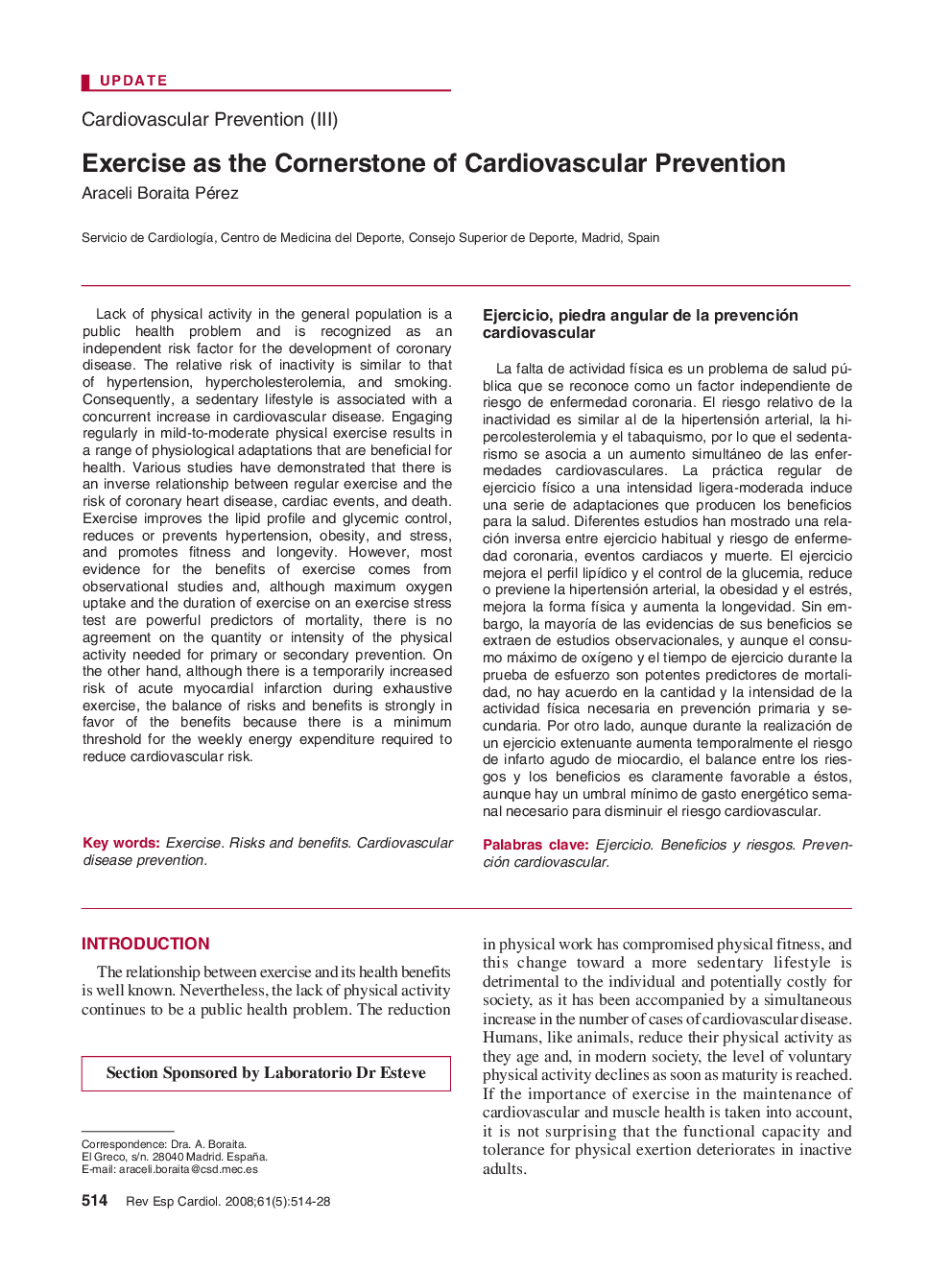| Article ID | Journal | Published Year | Pages | File Type |
|---|---|---|---|---|
| 3019268 | Revista Española de Cardiología (English Edition) | 2008 | 15 Pages |
Lack of physical activity in the general population is a public health problem and is recognized as an independent risk factor for the development of coronary disease. The relative risk of inactivity is similar to that of hypertension, hypercholesterolemia, and smoking. Consequently, a sedentary lifestyle is associated with a concurrent increase in cardiovascular disease. Engaging regularly in mild-to-moderate physical exercise results in a range of physiological adaptations that are beneficial for health. Various studies have demonstrated that there is an inverse relationship between regular exercise and the risk of coronary heart disease, cardiac events, and death. Exercise improves the lipid profile and glycemic control, reduces or prevents hypertension, obesity, and stress, and promotes fitness and longevity. However, most evidence for the benefits of exercise comes from observational studies and, although maximum oxygen uptake and the duration of exercise on an exercise stress test are powerful predictors of mortality, there is no agreement on the quantity or intensity of the physical activity needed for primary or secondary prevention. On the other hand, although there is a temporarily increased risk of acute myocardial infarction during exhaustive exercise, the balance of risks and benefits is strongly in favor of the benefits because there is a minimum threshold for the weekly energy expenditure required to reduce cardiovascular risk.
La falta de actividad física es un problema de salud pública que se reconoce como un factor independiente de riesgo de enfermedad coronaria. El riesgo relativo de la inactividad es similar al de la hipertensión arterial, la hipercolesterolemia y el tabaquismo, por lo que el sedentarismo se asocia a un aumento simultáneo de las enfermedades cardiovasculares. La práctica regular de ejercicio físico a una intensidad ligera-moderada induce una serie de adaptaciones que producen los beneficios para la salud. Diferentes estudios han mostrado una relación inversa entre ejercicio habitual y riesgo de enfermedad coronaria, eventos cardiacos y muerte. El ejercicio mejora el perfil lipídico y el control de la glucemia, reduce o previene la hipertensión arterial, la obesidad y el estrés, mejora la forma física y aumenta la longevidad. Sin embargo, la mayoría de las evidencias de sus beneficios se extraen de estudios observacionales, y aunque el consumo máximo de oxígeno y el tiempo de ejercicio durante la prueba de esfuerzo son potentes predictores de mortalidad, no hay acuerdo en la cantidad y la intensidad de la actividad física necesaria en prevención primaria y secundaria. Por otro lado, aunque durante la realización de un ejercicio extenuante aumenta temporalmente el riesgo de infarto agudo de miocardio, el balance entre los riesgos y los beneficios es claramente favorable a éstos, aunque hay un umbral mínimo de gasto energético semanal necesario para disminuir el riesgo cardiovascular.
